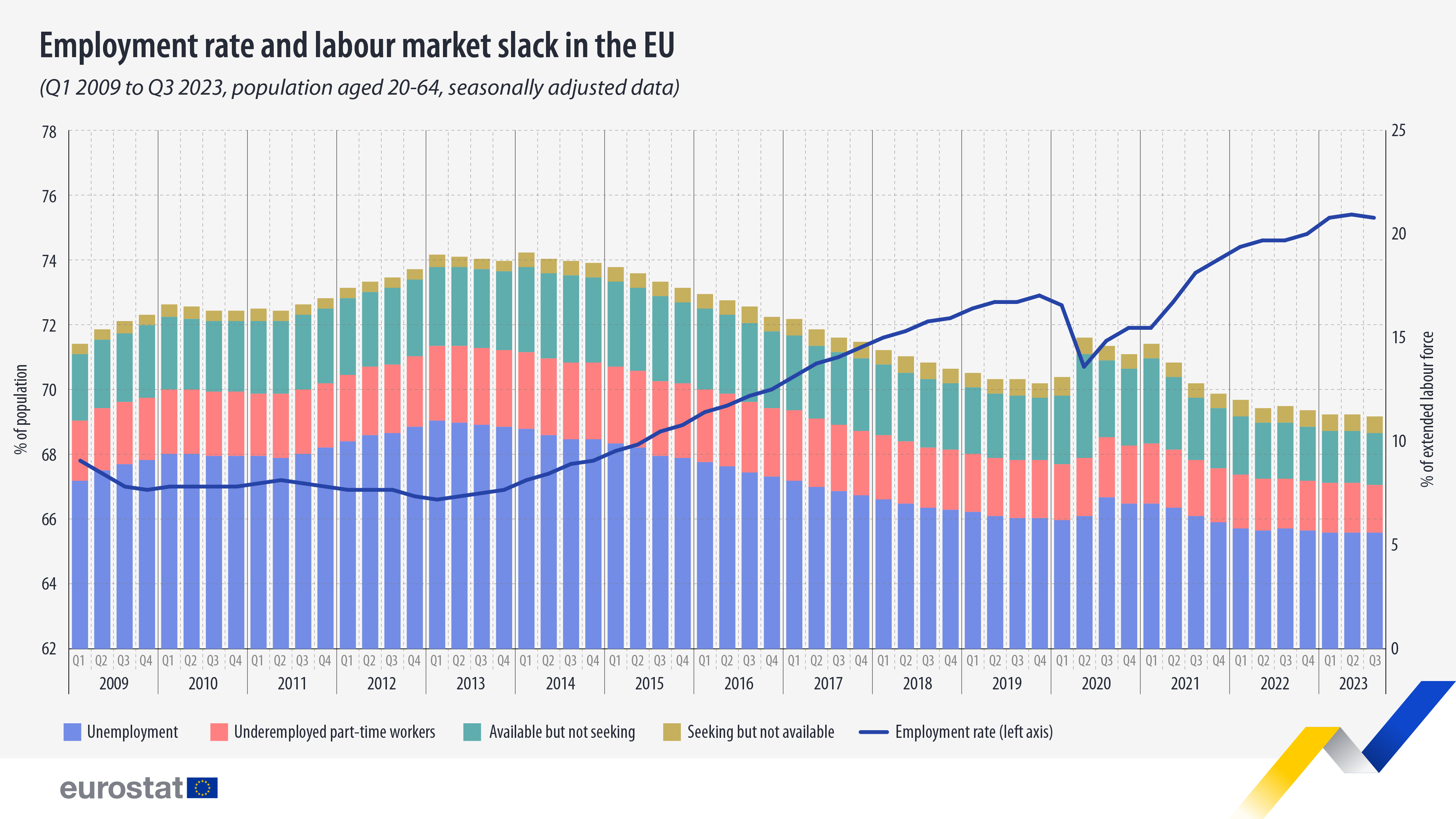Employment
Employment down in Q3 2023

In the EU, the employment rate of people aged 20-64 stood at 75.3% in the third quarter of 2023, a decrease of 0.1 percentage points (pp) compared with the second quarter of 2023.
Labour market slack – encompassing those with unmet employment needs, a large part of which includes unemployed individuals – amounted to 11.3% of the extended labour force aged 20-64 in the third quarter of 2023 (see note 1 on the methodological notes).
This information comes from data on the labour market in the third quarter of 2023 published today by Eurostat. This article presents only a handful of findings from the more detailed Statistics Explained article.

Source datasets: lfsi_emp_q and lfsi_sla_q
Between the second and the third quarter of 2023 the employment rate varied across the EU countries. Malta (+1.1 pp) and Belgium (+0.5 pp) registered the highest increases among the 11 EU countries where employment rose. The employment rate remained stable in Luxembourg and the Netherlands and decreased in 14 EU countries, with the biggest decreases recorded in Croatia (-1.3 pp) and Bulgaria (-1.1 pp).

Source dataset: lfsi_emp_q
More information
- Statistics Explained article on EU labour market - quarterly statistics
- Thematic section on the EU labour force survey
- Statistics Explained article on EU labour force survey
- Statistics Explained article on EU labour force survey - correction for breaks in time series
- Database on EU Labour Force Survey
- Education corner workbook on the labour market
Methodological notes
- Note 1: rounding differences could be observed in the second and third quarter of 2023 in the total labour market slack values (presented in the online database) when compared with the sum of its components.
- The extended labour force is the total number of people employed plus unemployed, plus those seeking work but not immediately available, plus those available to work but not seeking. In this article, data cover population aged 20 to 64.
- This article uses quarterly and seasonally adjusted data from the EU Labour Force Survey (EU-LFS) data.
Share this article:


































